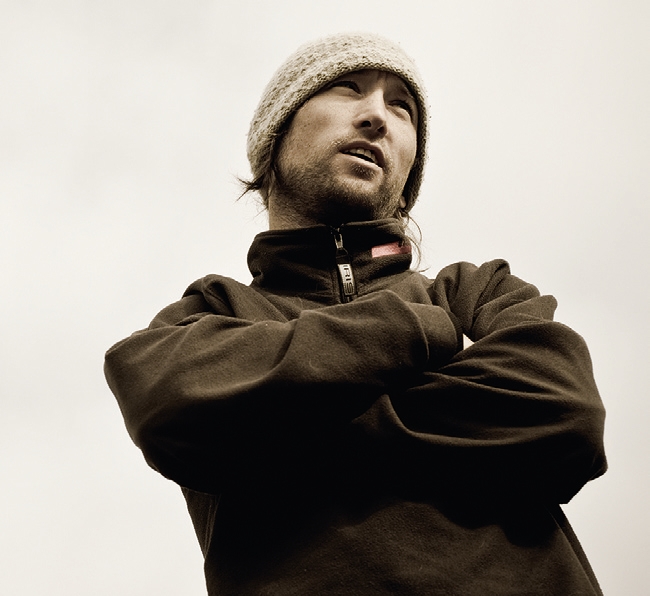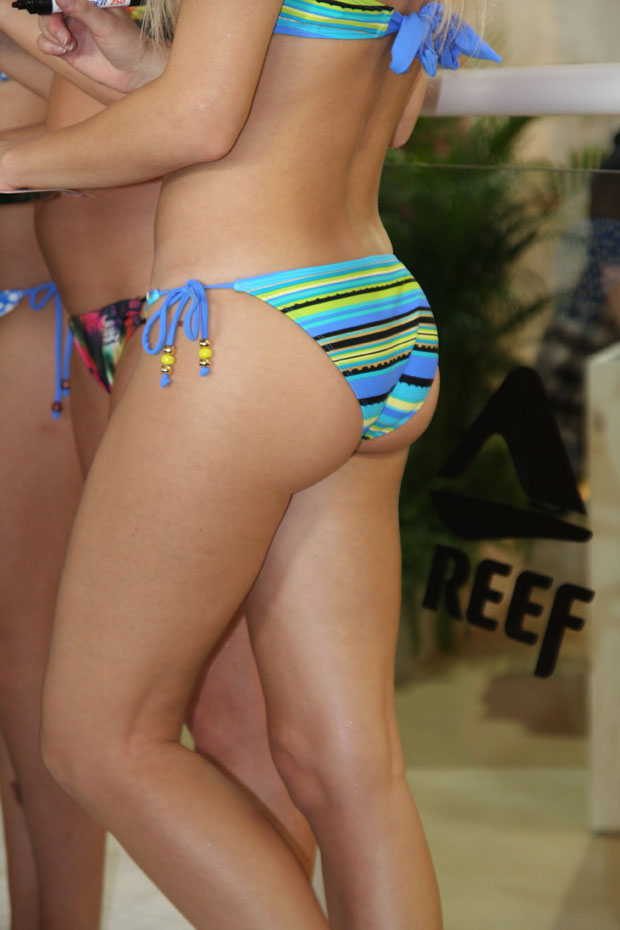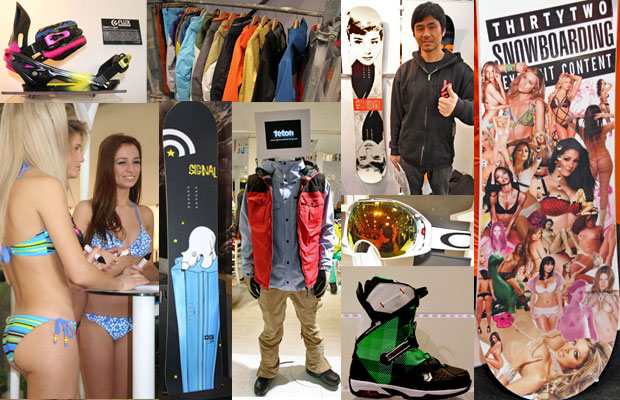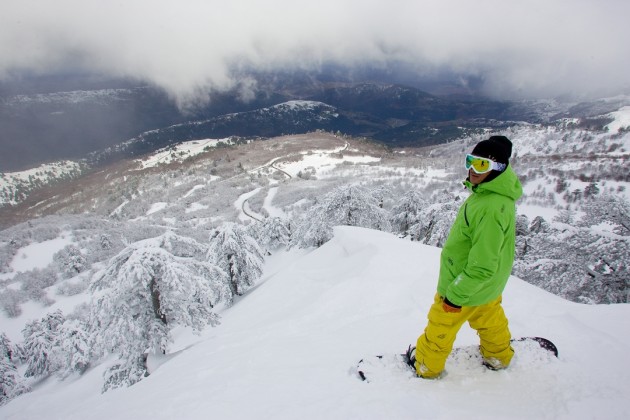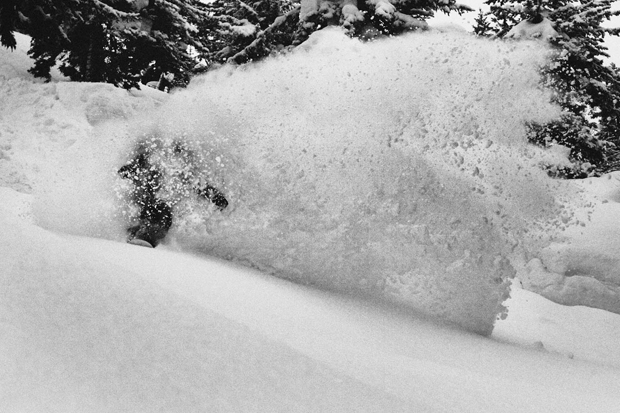Published in Whitelines Magazine Issue 88, January 2011
It’s long been recognised that tricks are not the be-all-and-end-all of snowboarding. While the size of a pro’s trick bag is a factor, what sets truly great backcountry riders apart from merely good ones is their ability to pick a line. Planning a great line takes vision, creativity and forethought. Riding it well requires skill, control and the ability to think on your feet. Combining these two takes practice, but it’s worth it – looking back at an unbroken line you’ve just drawn down a massive mountain is a pretty special feeling. Here, Devun gives you guidance on how to get your practising off to a good start.
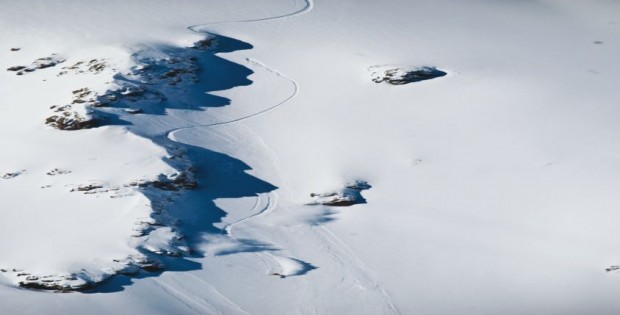
Why is picking the right line so important?
It’s important to pick a line that reflects your ability level. The last thing that you want to happen is you get half way down and realize you are in over your head- cos then you’re fucked. One other thing is make sure you know the snow conditions, if it’s blower pow no stress, but sometimes these areas can get affected from wind and sun so be aware of what you’re going to turn on and land in! So picking the right face to ride is also important.
Where’s the best place to try my first few lines? Under the lifts? Between trails? Or just hike a bit, drop and hope?
For your first time you should go somewhere you are familiar with, like your local resort, or if that doesn’t have the steeps, somewhere you know does. For me it was some steep chutes under the chair at my local spot Seymour. They’re not huge but they have some lines with trees and drops. Quick but very satisfying still to this day. If you know the spot you likely will feel a little more comfortable the first time. After I practiced there I took it to bigger spot like Whistler/Blackcomb.
When’s the best time to try it and what weather conditions are best?
It is obviously best to hit in powder conditions, and I would recommend that for your first time it be powder since chances of falling are much higher. I would wait for a day with good light conditions since it is really easy to get confused in fl at light conditions and also really hard to spot landings if you have any drops in your line.
Do I need to be with friends or can I try this by myself?
Usually being with friends is best, in case you take a bailor need guidance. I would definitely recommend hitting it with buddies, especially when you pull it so someone is there to see it!
What special equipment do I need to take with me?
It depends what this line is and where. For your first time, I would recommend hitting something in bounds that has been cleared by the ski patrol. I would still bring an avalanche transceiver, as you can never be too safe, but a pack with probe and shovel might be overkillin resort. But if you are hiking out to a non-patrolled area these are a must!
What kind of board should I be rocking?
I ride a directional and a twin in all conditions – it really depends on the day. If I’m just out shredding around I might ride either but if I’m going to be filming any jumps I’ll bring a twin tip. We usually hit a line or two in the morning then build a jump in the afternoon, and the twin does both.
What’s the best way to scope out a line? I guess if I was a pro I’d have a heli, but I don’t, so how can I check it out properly anyway?
I like to ride below it, get right up under it to make sure I can clear all the cliff s and that the landings are steep. If possible take a run down beside it also. I might even look off the top to see what I see then ride around and look up to find the reference points I saw from the top. Over-scoping is not possible, so take your time and figure out where you need to go.
What features should I look out for?
It depends on your creativity and your ability level. When filming I look for the most exciting route, whether it is some turns and a cliff drop or a wind drift with cliffs below. I like to find stuff I can do tricks off too, like a hip or wind drift or a fl at-topped cliff. Whatever suits your eye really and what excites you.
Where do I find pillows like I see in the movies?
Good Question. When you do find‘em, let me know….haha! These spots are hard to find but they are usually in or near river valleys. I look for these things all the time, just keep your eyes peeled.
How do i know if a cliff is safe To drop?
You need to make sure there is a steep landing below and that it is not too big, cliffs look small from far, so make sure of the size before hitting.
Is there a different technique to hitting cliff drops compared with kickers?
You need to keep yourself square over your board and don’t lean back or you will land on your back. You need to bone your nose down into the landing and land over the bolts. Cliff s look so big and scary but a little trick to think of is that you are usually never higher than five toten feet off the ground – because you are always just floating down the face so you don’t actually ever leave the ground too much. If the landing is steep then you usually just touch down.
What tricks are good to try off cliff drops?
I like to try easy and slow spins like front 3’s and switch BS 180’s. But you can do anything of them.
How do I know if a chute is going to be ok to ride down?
The thing with chutes is that if it slides it all funnels into one spot and can create a really deep slide, which is dangerous, so check the snow conditions and avalanche warnings really carefully before dropping in. I would also make sure that there isn’t a terrain trap (a hole, like a creek bed or a tight area where the snow will pool) at the bottom or that there isn’t a big cliff. If it isn’t really deep you should be fine though, and especially if it is on a bombed area of the mountain. If something does go, try and get to the high point of the chute along the walls.
Everything looks really different from the top compared to how it did when I was checking out the face. How do I work out which are the features I wanted to hit and which are the areas I wanted to avoid when I can’t recognise any of it anymore?
Once you’ve picked your line you need to find reference points like a half snow-covered tree or a weird rock, something you’ll be able to find from the top easily. I really like to plan out where I’m going, where I’m going to turn and, if something slides, where I’m going to go for safety (like a ridge or a small group of trees). It helps to break the line into parts like say: “I start at that tree and then I’m going to turn above that rock (not below because there is a cliff there) then point it from there down the chute. Hell yeah! Stomped it. Call your buddies!” If you don’t feel comfortable doing this or get disoriented easily you need to find features that are not too blind and that you can creep down.
If there are tracks down a face already, does it mean it’s safe from avalanches?
Not necessarily, those tracks could just be on the top layer and haven’t gone down deep enough to cut a fracture. You could go down there, make a deep stop and boom – away she goes.
What factors make a really great line?
Stomping it with speed and style, especially if it’s really cool-looking. Sometimes it can just have cool features that you don’t normally see, like a huge weird looking tree, rock or something.

Devun Walsh is a genuine snowboarding legend. Hailing from the west coast of Canada, he first rose to fame in the 1990s as a founding member of the Forum team. With his uncanny ability to soak up heavy landings, Devun’s backcountry prowess is un paralleled, throwing down super smooth freestyle tricks in powder. These days he is still charging hard for DC snowboards, in between sharing two decades of accumulated riding wisdom with the Whitelines readers.

